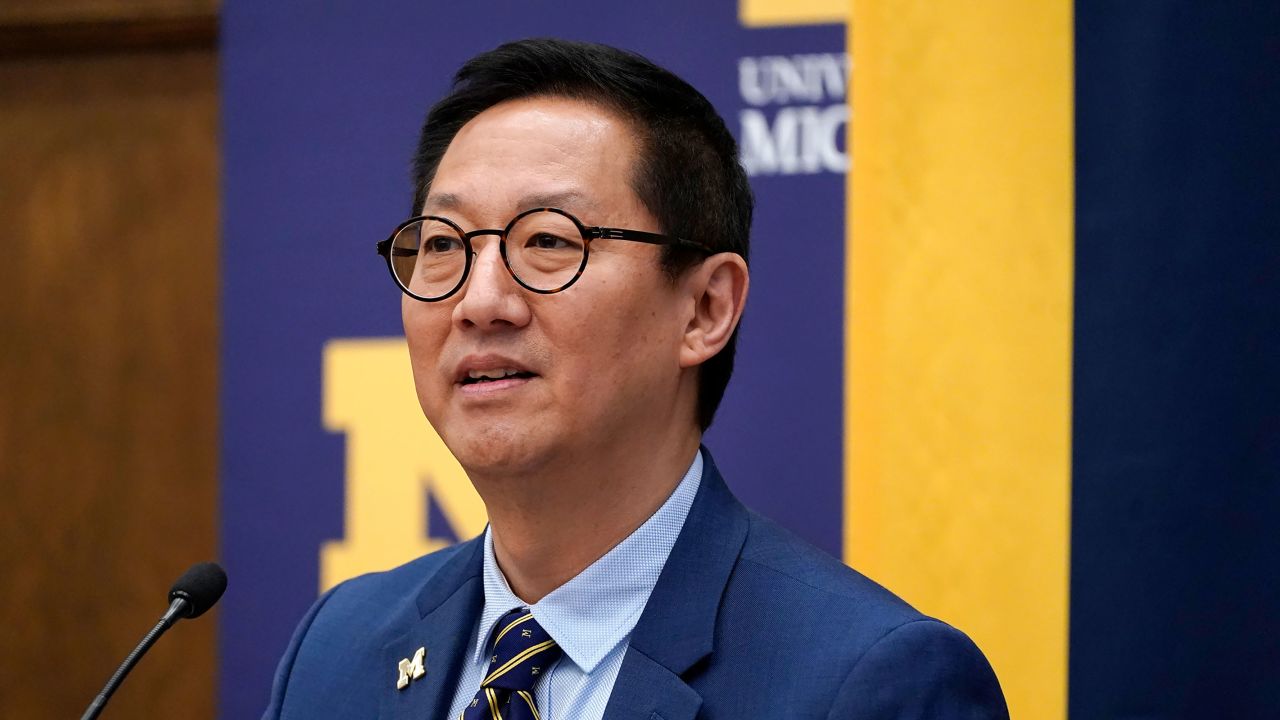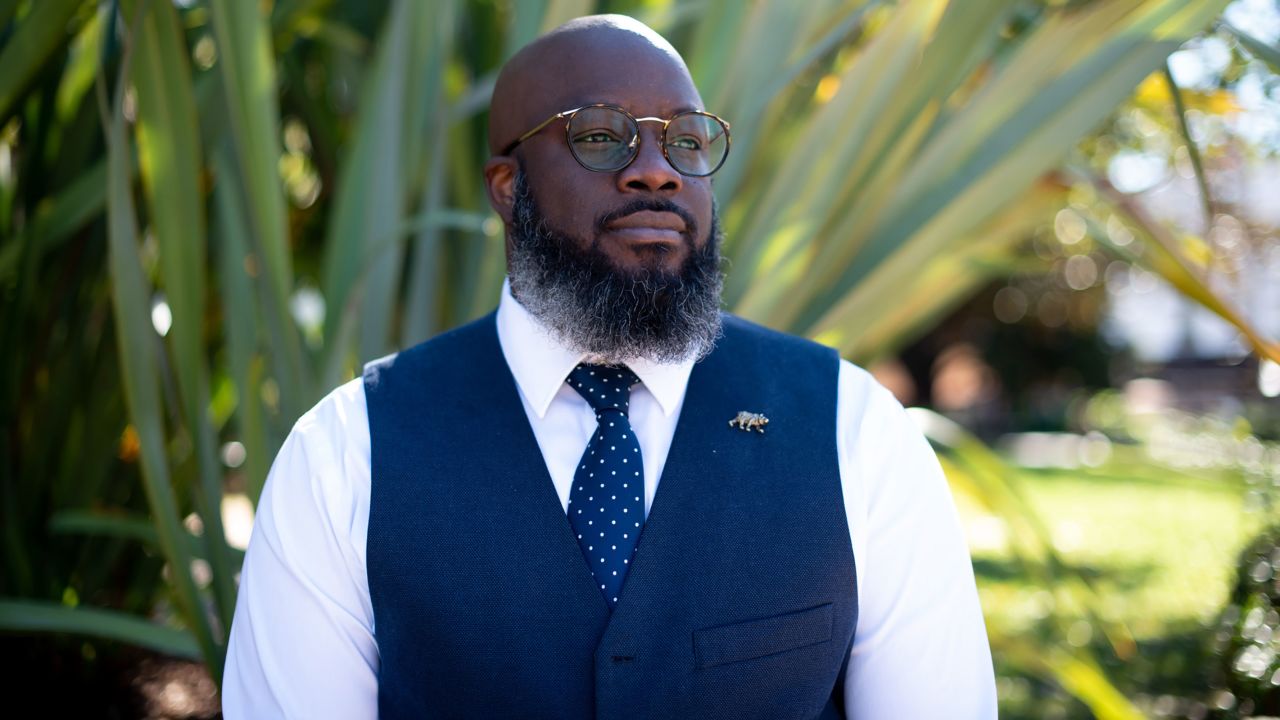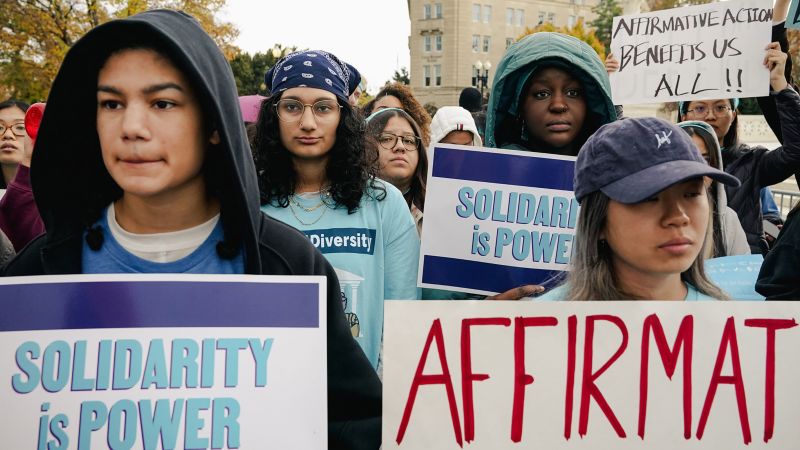CNN
—
The Supreme Court’s landmark decision to bar colleges and universities from considering race as a specific basis for admission will make it more difficult for schools to achieve a diverse student population, civil rights leaders and education advocates say.
The gutting of affirmative action upends a long-standing precedent that has benefited disadvantaged Black and Latino students in higher education.
The practice has been in place since the 1960s as a tool to prevent discrimination at selective institutions, many of which historically only admitted White students.
Now universities across the country seeking diversity will be charged with finding other ways to reach Black and Latino students. The task, researchers and education officials say, will not be easy.
Wisdom Cole, national director of the NAACP Youth & College Division, called the rollback of affirmative action a “dark day in America.”
“Affirmative action has been a beacon of hope for generations of Black students,” Cole said in a statement Thursday. “It stood as a powerful force against the insidious poison of racism and sexism, aiming to level the playing field and provide a fair shot at a high-quality education for all. Students across the country are wide-awake to the clear and present danger encroaching on their classrooms.”
The Supreme Court case was sparked by conservative activist Edward Blum, who filed lawsuits in 2014 against Harvard University and the University of North Carolina-Chapel Hill challenging their use of race-conscious admissions. Blum and other critics of affirmative action have said college admissions should be based on equal standards and merit.
Chief Justice John Roberts wrote the opinion on affirmative action for the conservative majority, saying the Harvard and University of North Carolina admissions programs violated the Equal Protection Clause of the 14th Amendment because they failed to offer “measurable” objectives to justify the use of race. He said the programs involve racial stereotyping and had no specific endpoint.
Civil rights leaders and experts say the Supreme Court ruling is a setback for equality in education.
Racial diversity at colleges and universities – particularly at competitive and Ivy League schools – may suffer, they say. A study by the Georgetown University Center on Education and the Workforce found that colleges and universities are less likely to meet or exceed their current levels of racial diversity in the absence of race-conscious admissions. They are also less likely to reflect the racial makeup of the population graduating from the nation’s high schools.
Zack Mabel, a researcher for Georgetown’s Center for Education and the Workforce, said he expects the number of Black and brown students attending selective colleges nationwide will drop from the current 20% to about 16% without affirmative action in place. Mabel said race-neutral practices have not driven the diversity many colleges hoped for and some students are simply not applying.
“The only thing it’s going to do is further discourage students from underrepresented groups from applying for these institutions,” Mabel said. “And it’s going to be harder for admissions officers to admit them because they have one eye blind when they are trying to admit these students.”
Rashad Robinson, president of Color of Change, said the decision only opens the door for more people with “privilege” to be admitted into selective colleges. Robinson described those applicants as athletes, legacies, students with access to test preparation services and applicants who come from wealthy families.
He challenged colleges to prevent this disparity by giving applicants a holistic review that includes their socioeconomic background and the challenges they have overcome.
“We are pushing universities to make a plan and be transparent about those plans,” Robinson said. “Privilege-based admissions … will only lead to a country where who you were born to and what opportunities were afforded to you at birth, that had nothing to do with your merit, determines where you get to go.”
Marshall Anthony Jr., a research director for The Institute for College Access & Success, urged President Joe Biden’s administration to take action to eliminate the barriers to college access for people of color such as standardized testing mandates, application fees, legacy admission and merit-based aid.
“All of these disproportionately, negatively impact the access and success of Black and Latinx students,” Anthony said.
Affirmative action was already banned in nine states, including in Michigan and California, and these states could be case studies of what is to come for the entire country, some experts say.
Colleges in Michigan, which banned affirmative action in 2006, and California, which banned the practice in 1996, have tried race-neutral approaches to affirmative action including more consideration of high school class rank and socioeconomic status in the admissions process. Still, Black student enrollment dropped at flagship schools such as the University of Michigan and the University of California, Berkeley and UCLA after affirmative action ended.
Black undergraduate enrollment at the University of Michigan fell from 7% in the fall of 2006 to 4.4% in the fall of 2022. In recent years, the University of Michigan has launched programs aimed at diversifying the student body including Go Blue Guarantee which targets low and moderate-income students; Kessler Scholars which targets first-generation students; and Wolverine Pathways for students from under-resourced communities.

University of Michigan President Santa Ono said while the university is slowly regaining more Black students, the programs have taken time to implement and the results won’t come overnight. Ono said affirmative action provides the most immediate impact on diverse student enrollment.
“I just think about the number of students who could have gone to Michigan between 2006 and today who could not,” Ono told CNN. “It’s part of the American dream, equal opportunity requires equal access to education as a foundation.”
Ono said diversity is important on college campuses because students can grow and learn from each other, hear different perspectives, and experience an environment that is a reflection of the real world.
Across the University of California system, Black enrollment fell dramatically after the state outlawed affirmative action in 1996.
According to school data, the University of California, Berkeley’s Black student enrollment was 5.9% in 1995, compared to 3.8% in 2022.

Olufemi Ogundele, associate vice chancellor of admissions & enrollment at UC Berkeley, said the university has struggled to achieve the same level of diversity it saw before affirmative action ended. University officials have spent more than $500 million on outreach efforts to low-income communities, according to a Supreme Court brief filed last year by university lawyers. Still, Ogundele said it’s been difficult to reach more Black students due to demographic shifts in underserved neighborhoods.
His office, he said, has found the most success with holistic review practices where they consider factors such as the academic environment of the K-12 school system the applicant attended.
“For a student who goes to a school that does not have AP Physics or AP Calculus, we don’t hold that against that student,” Ogundele said.
But more Black students could be admitted to the highly ranked UC Berkeley if affirmative action was legal in the state, he said.
“I do think that if we were able to consider (race) we would absolutely see a more much diverse class,” Ogundele said.
Sumber: www.cnn.com






